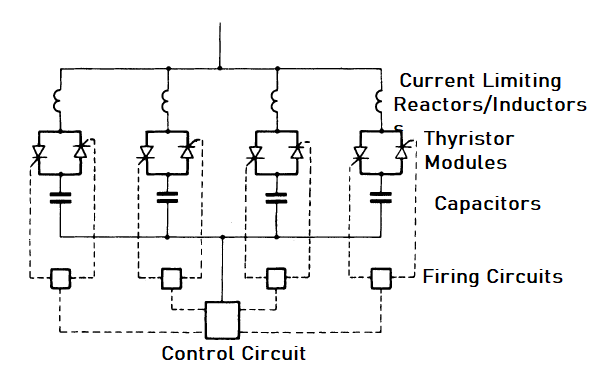Category: Power Systems
-
The Problems Associated with Embedded Power Generation
The rate of the development of energy sources that are alternatives to hydrocarbons is happening at a greater pace than any other time before; this is mainly because of the environmental reasons i.e. the limitation of carbon dioxide emissions and for the longer-term sustainability of energy supplies. The role played by such alternative energy sources…
-
The Effects of Low Power Factor on Electrical Equipment
The cosine of the angle between voltage and current in an AC circuit is referred to as the power factor. In a typical AC circuit, there is a phase difference Φ between the voltage and current. The term cos Φ is termed to as the power factor of the circuit; if the current is inductive,…
-
Synchronous Compensators, What is their Purpose in Power Systems?
When designing a transmission or distribution system, the engineer must take into account not only the power requirement of the loads, but also the fact that they consume reactive power and to the same degree key, that networks include inductive and capacitive components which themselves absorb or generate reactive power. Power is generated and consumed…
-
What is the Function of Unified Power Flow Controller?
In a number of cases, it may be possible to increase the grid’s capacity through enhanced control of the active and reactive power flow in the transmission network independently of busbar voltage. The Unified Power Flow Controller (UPFC) provides the reactive shunt compensation, active and reactive series compensation and phase shifting. It is thus capable…
-

What are Flexible Alternating Current Transmission Systems (FACTS) Controllers?
Flexible AC Transmission Systems (FACTS) can be described as AC transmission systems incorporating power electronic-based controllers and other static controllers to boost controllability and increase power transfer capability. FACTS equipment that provides control of one or more of the parameters of an electrical network is often referred to as a FACTS controller. FACTS devices may…
-
The Connection of Green Energy Generation Plants to Power Systems: Key Factors to Consider
To prevent negative effects on the operation of the power system and equipment, a number of factors must be considered when connecting green energy generation plants to these systems. The following should be factored in: With the increased development of green energy generation plants, special aspects need to be considered such as the use of…
-
Causes of Power System Disturbances & Corrective Measures
Even though most protective system designs are built around individual components, system-wide disturbances in power systems are rather a frequent occurrence and a challenging issue for electric utility companies. When major disturbances occur in power systems, it is imperative to implement coordinated protection and control actions to stop the system degradation, restore the normal state…
-
Sources of Power Quality Problems
Power quality may be affected by a number of issues. Our discussion in this article focuses on various devices and events that lead to problems in power quality. The common sources of power quality problems include: Power Electronic Devices Power electronic devices cause power quality disturbances and they are also susceptible to them. Variable speed…
-
Common Terms Used When Describing Power Quality Problems
Power quality has become an important issue to electricity consumers at all levels of consumption. This has especially been intensified by the common use of sensitive equipment and non-linear loads in both industrial and the domestic environs. In this article we look at some of the common terms typically used when describing power quality problems.…
-
AC to AC Power Converters with Intermediate DC Link: Types, Features & Applications
This category of AC drives that is often referred to as “Variable Frequency Inverters” is one of the most extensively used drives in industrial motor control applications. Generally, the concept of these inverter drives can be summarized into three parts: We have two main classifications of these AC drives that are based on the aforementioned…